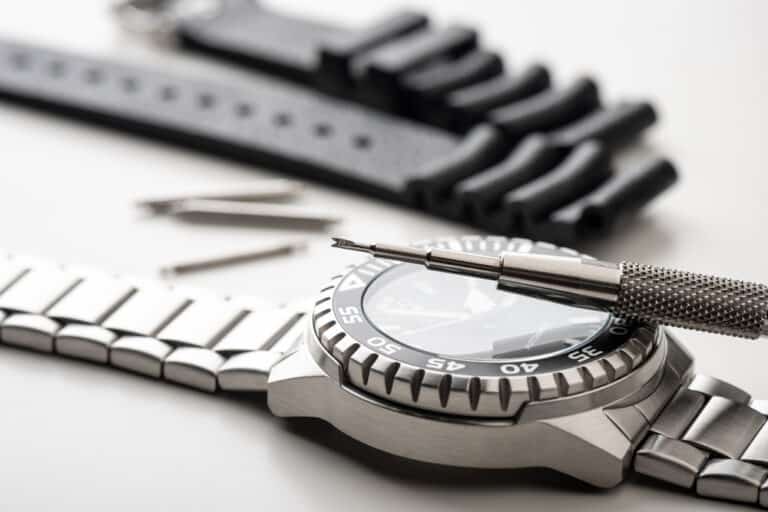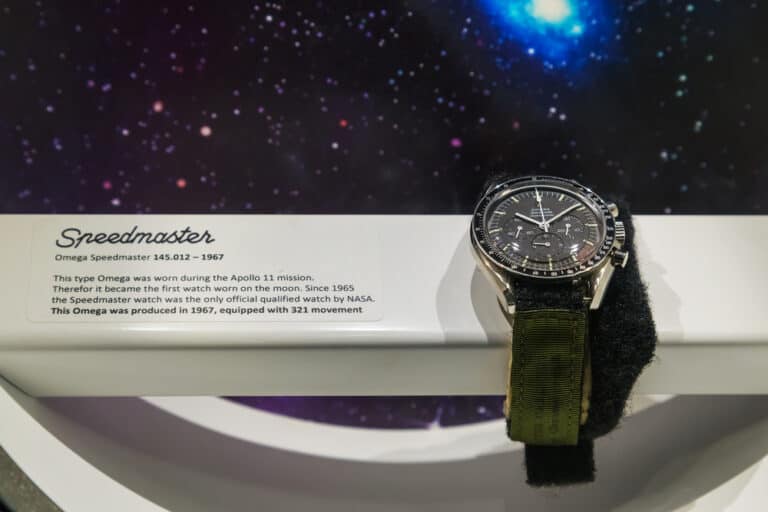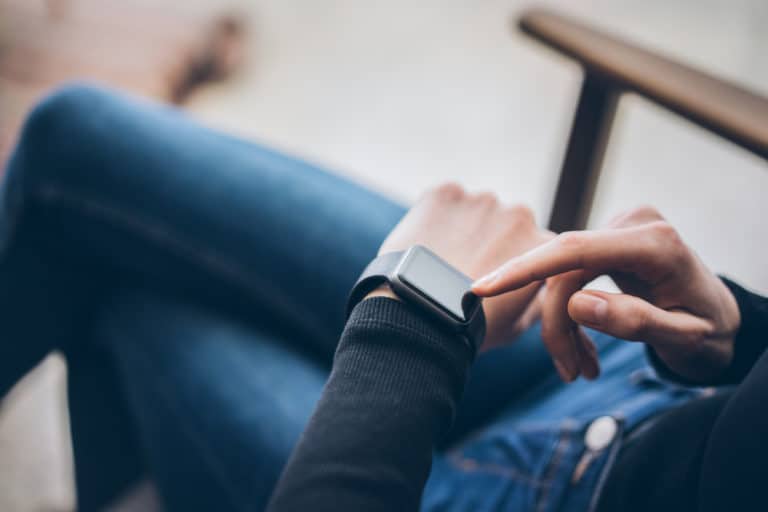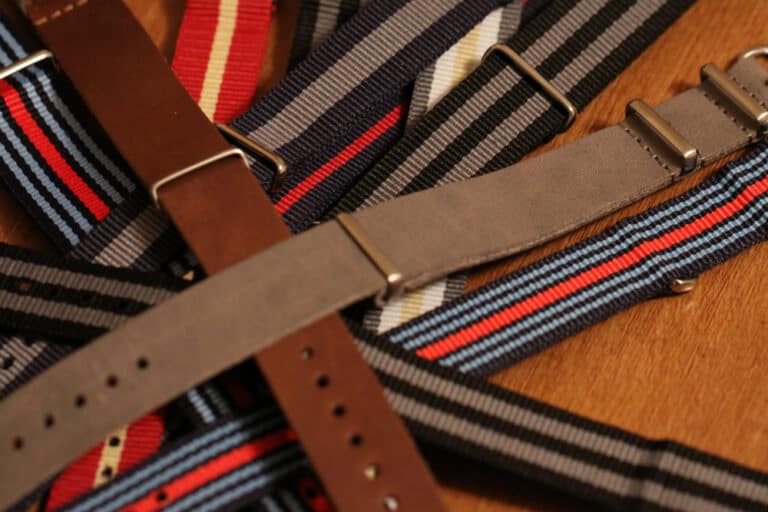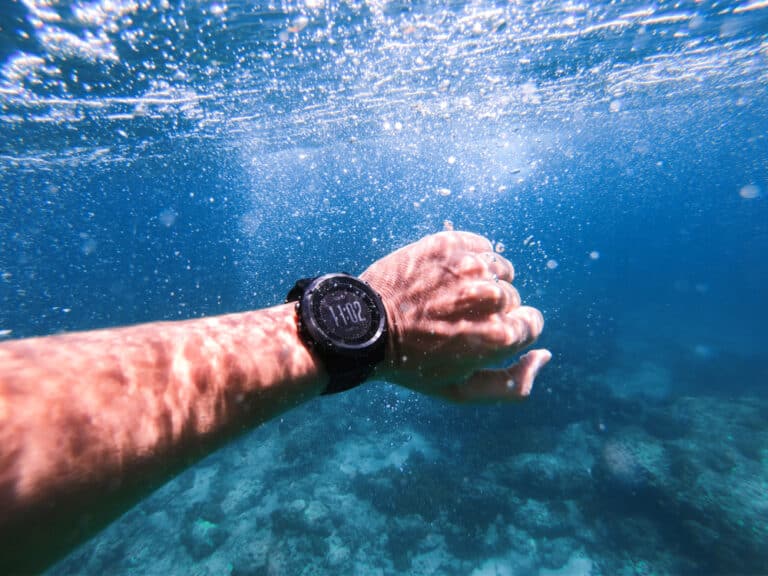An accurate watch has always been a necessity when it comes to timepieces, and many manufacturers go to great lengths to ensure high levels of timekeeping accuracy in their mechanisms. Still, even so, most watches do lose seconds.
A watch losing seconds means running slowly; over time, the time displayed on your watch can be minutes slower than the actual time. There are several reasons why a watch will run slowly, from battery and mechanical issues to magnetic interference and impact.
To understand why a watch loses seconds, we need to look at several factors, including the make, power source, and the external factors that can cause a watch to lose seconds, as well as how often and how much a watch can lose time.
What Is A Second And How Is It Measured?
Most people take their time for granted and have very little idea how these units of time are measured. Everyone knows that there are sixty seconds in a minute and sixty minutes in an hour, but very few people know how the second as a unit of time is measured and standardized.
People use the ‘one-one thousand,two-one thousand, three-one thousand’ count to track and count seconds, but this will never be completely accurate, so let’s look at what the second is and how it’s calculated.
How The Second Was Defined Before 1967
The second was defined as 1/86400 of the mean solar day, which is the time that the Earth rotates on its axis relative to the sun, and of course, if you do the calculation, you will know there are 86400 seconds in every 24 hours.
Due to the need for more accurate timekeeping, the definition of the second as a unit of time was changed in 1967 and is now measured as the time it takes for one atom of Caesium 133 to complete 9, 192, 631 700 radiation cycles.
That’s nine billion, one hundred and ninety-two million, six hundred and thirty-one thousand seven hundred cycles.
This measurement and definition of the second became the standard SIU unit of time as determined by the BIPM or The International Bureau Of Weights And Measures .
The System of International Atomic Time (TAI) is a network of about 270 atomic clocks that transmit time signals to the BIPM. If you think your super-expensive watch is accurate, atomic clocks only lose about one second every 50 million years!
These hyper-accurate clocks are required to keep time as close to Earth’s actual time scale as possible.
However, as accurate as these atomic clocks are- even they lose seconds. This is due to micro-fractional influences of friction and the effect of gravity on the mechanical motion of the clocks, so don’t feel bad if your $6000 Rolex loses a few seconds every year!
How Many Seconds Do Watches Lose Every Day?
For good quality watches, the accepted standard is around eight seconds per day; for Chronometer certified watches, it would be about four seconds per day or less.
While this may not seem a lot if you extrapolate that over thirty days, three months, six months, and a year, the cumulative loss of accuracy is significant.
Over thirty days, a watch losing eight seconds per day would run about four minutes slow or 240 seconds.
After three months, that inaccuracy would be twelve minutes; after six months, it would be 24 minutes; after a year, your watch would be running 48 minutes slow, which, in modern-day times, means you are going to be substantially late for your appointments.
What Is A Quartz Powered Watch
These watches use a tiny piece of a quartz crystal to maintain time. The crystal vibrates 32 768 times per second, and the watch measures this to keep accurate time.
Factors like temperature and air pressure can cause the watch to run slightly faster or slower, but on the whole, the watches powered by quartz movement only lose or gain around 30 seconds per month.
What Are The Most Accurate Watches
Atomic watches or clocks are the most accurate, losing about one second every fifty million years. In contrast, quartz watches are the second most precise, losing about one second every thirty years.
Mechanical watches are the most common watches in society, and their loss can vary from around two seconds per day to twenty or thirty seconds per day, depending on the make and quality of the watch.
Digital watches are also entirely accurate, with many of the quality brands only losing about 1-2 seconds per day which is better than the mechanical accuracy rate, and this is because many of these are quartz powered.
Don’t expect a $5 street watch to keep hyper-accurate time, but you should expect your high-end timepieces to have a high level of accuracy.
Can You Have A Watch That Does Not Lose Seconds
The answer there is no.
Isochronism or consistent oscillation needed for perfect timekeeping is not possible as the fundamental mechanisms involved, even at the atomic level, will suffer a prolonged and almost imperceptible loss, even if that is over millions of years.
Why Do Watches Lose Seconds
There are several reasons that watches lose seconds, most of which have to do with the internal mechanics and the way it is powered. But other factors like magnetism, impact, and how often the watch is worn in the case of automatic watches will all impact the watch’s accuracy.
Where you have automatic watches that run on the motion of the human body, the mechanisms tend to be more accurate than battery-powered watches that can lose seconds when the battery starts to lose power.
Let’s look at the reasons that watches would lose seconds.
A Watch Would Lose Seconds Because Of Magnetic Fields
Magnetic fields, you may ask? As a modern society, we are surrounded by magnetic fields in almost every aspect and situation we find ourselves in daily. Every electronic device you own emits an electromagnetic field, which affects and magnetizes the steel components in the watch’s mechanism.
When magnetized, these steel parts have tiny magnetic forces that interact between the moving parts, and this causes friction between them, causing the mechanism to run slower and thus cause the watch to lose seconds.
The main component affected by magnetism is the balance spring, and of late, many manufacturers have turned to using non-magnetic materials such as silicone for the balance springs. Almost 80% of all watches that require correction and servicing for loss of time are magnetized, so watchmakers would be well-advised to see whether they can produce anti-magnetic watches.
The difficulty with this is that most materials used in manufacturing are magnetic and therefore susceptible to the effects of weak magnetic fields.
Aside from the virtually inescapable effects of magnetic fields, watches are also vulnerable to atmospheric factors such as temperature, air pressure, and water pressure if you use the watch for diving.
While the effects on the watch from these factors are minute, they do have an impact and if you notice your watch is running slow, consider the heat and altitude you are at as a cause, rather than the watch having mechanical issues.
What Is Chronometer Certification
If you want a super-accurate watch, you need to invest in one that is Chronometer Certified.
The number of seconds lost per day will depend on the watch’s quality and whether they are Chronometer certified, which is only in the realm of expensive watches like Rolex, Tag Heuer, and Breitling.
The COSC certification is the highest level of accuracy that can be achieved and is only available for automatic watches.
The Contrôle Officiel Suisse des Chronomèters or COSC is a non-profit organization that rigorously tests automatic watches over 16 days under all conditions and then issues the Chronometer Certification if the watch passes the test.
Only about 3% of all automatic Swiss-made watches are Chronometer certified, and that certificate will be in the watch’s box. These are the most accurate mechanical watches available and would only lose about 4 seconds per day.
This certification also explains why these watches are so expensive, as they are manufactured with superior components and guarantee the timepiece’s quality and accuracy.

Impact Can Cause A Watch To Lose Seconds
Suppose the watch is dropped or experiences impact during wear. In that case, this can affect the internal components adversely and cause the watch to run less efficiently and accurately, resulting in a loss of seconds. This can vary depending on the severity of the impact.
Impact on the watch can cause the dial to move and this, in turn, creates binding on the digits of the watch, causing it to slow down and lose seconds.
Impact may also cause an alteration with the watch’s spring key, resulting in the watch running slowly.
Old Batteries And Old Watches Can Cause A Loss Of Seconds
Suppose you have a battery-powered watch as opposed to an automatic one. In that case, if the battery starts to lose power, the watch will gradually slow down, and the time difference between actual time and displayed time will become more apparent.
This is easily fixed by replacing the battery.
If the watch is old, parts of the mechanism may be worn and not operating at optimal precision. This would need to be assessed by a professional watchmaker, and repairs or replacements to the failing or worn components will restore the watch’s accuracy.
Poor Maintenance Can Cause A Watch To Lose Seconds
For many watch owners, the thought of taking your watch for a service may never occur to them, but like your car, the watch is a mechanical device. Over time, the internal lubrication may reduce, causing friction and resulting in the watch starting to lose more seconds in a day gradually.
When servicing your watch, never do it yourself, especially if you have an investment timepiece like a Rolex or Tag.
These watches and most others require specialized skills and qualifications to properly service watchmakers that offer these services and have been certified by the Original Equipment Manufacturer to perform this work on their products.
The watch movement will require servicing to keep it congruent with the original direction it had when it left the factory, and again, qualified watchmakers best do this.
In most cases, the watch only requires a good cleaning and oiling to restore its accuracy, and that service can also include balance regulation.
Automatic Watches Will Lose Seconds If Not Worn
If you own an automatic watch like a Rolex and don’t wear it for periods, the motion of the human body that powers the mechanism is absent and will cause the watch to lose seconds.
If you aren’t going to wear the watch that often, then you can wind it (yes, wind it) twice a week to keep the time accurate.
Putting the crown in the first position and then turning it clockwise for about 20-40 turns until you feel resistance will indicate that the watch is wound.
While automatic watches are accurate, they can also run slow depending on how much energy they receive from the wearer and the temperature, humidity, gravity, and the effect of magnetic forces on the watch.
At night, place your automatic watch with the face upright as gravity will affect the spring if the watch is placed on its side.
Also, if you have a watch winder to place the watch in, then use that and make sure you don’t place the watch near any electromagnetic fields such as tablets, phones, or computers.
Conclusion
Every watch and clock on the planet will lose or gain seconds depending on what kind of watch they are, the conditions they are used under, how well they are maintained, and whether they suffer an impact, as well as the quality and accuracy of their design, materials uses and quality.
While you will never own a watch that keeps perfect time for its lifespan or yours, you can undoubtedly own impressively accurate watches. How much value you put on the accuracy of your timepiece will determine what kind of watch you buy, but regardless, you have to admit that the watch is a fantastic piece of engineering!
Resources
- https://timepiecelegacy.com/what-causes-a-watch-to-lose-time/
- https://www.montredo.com/watch-running-fast-or-slow-here-are-the-most-common-reasons/
- https://blog.crownandcaliber.com/my-automatic-watch-is-losing-time-what-do-i-do/
- https://www.jurawatches.co.uk/pages/automatic-watch-movement-accuracy
- https://www.britannica.com/science/atomic-time

